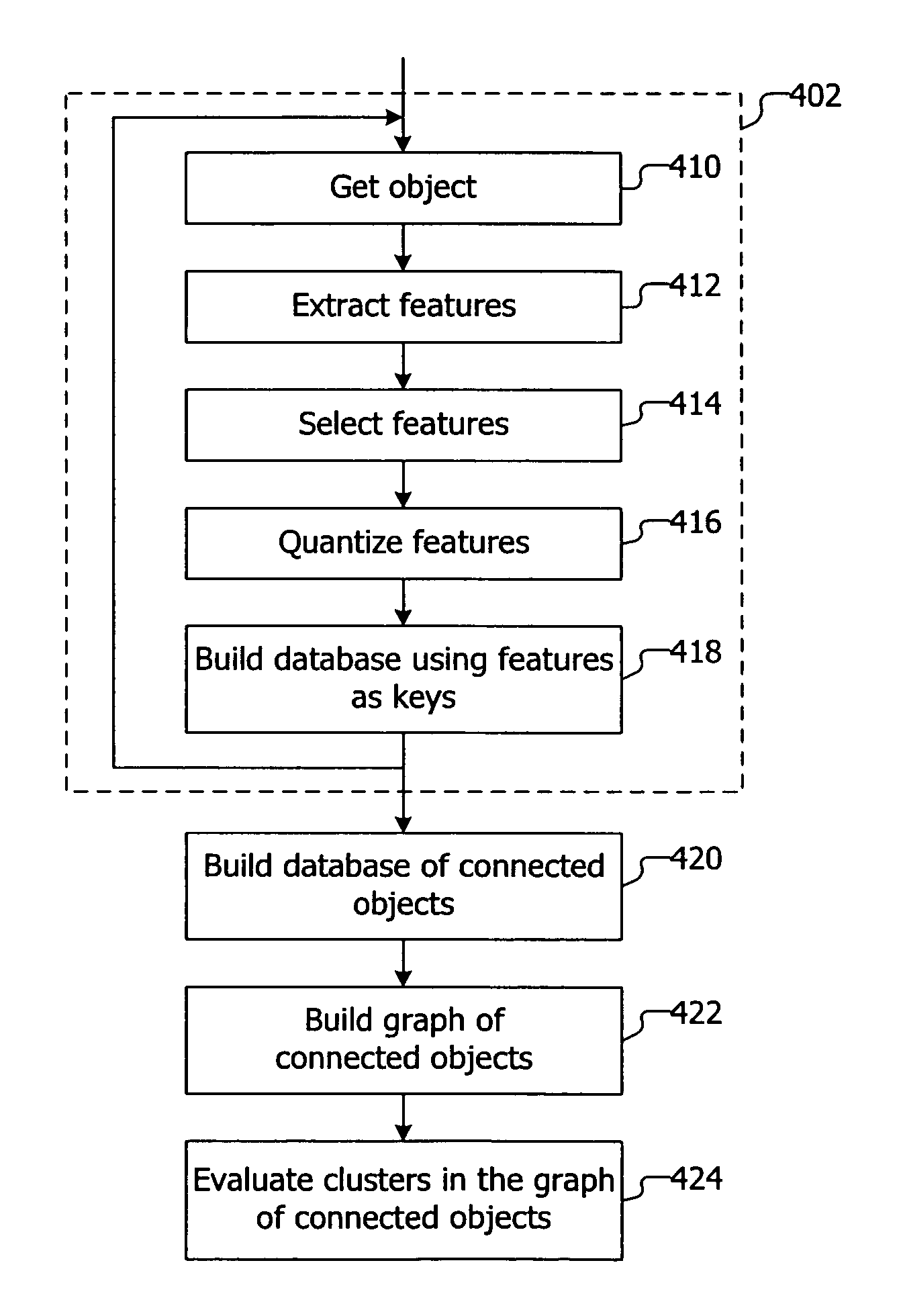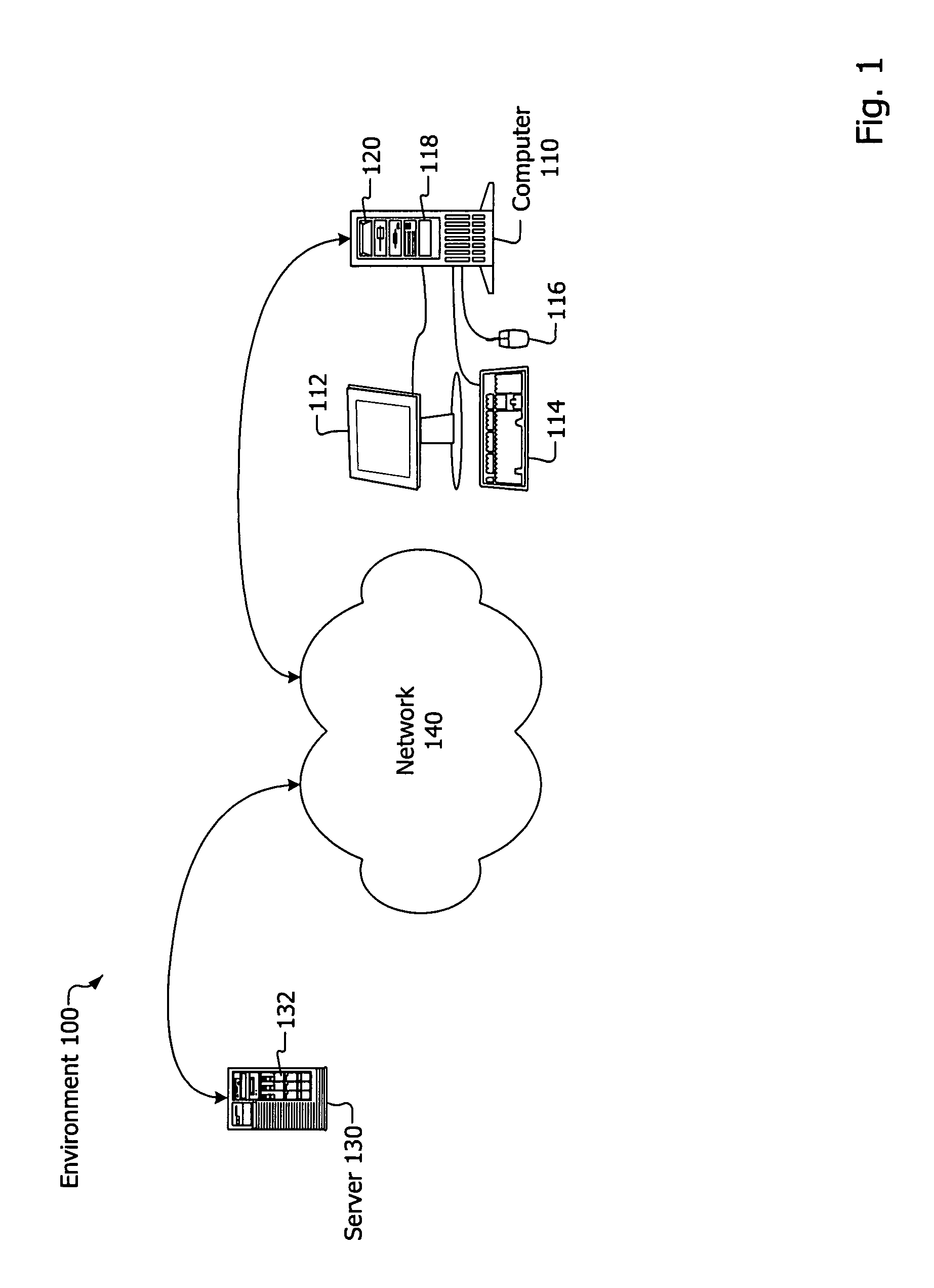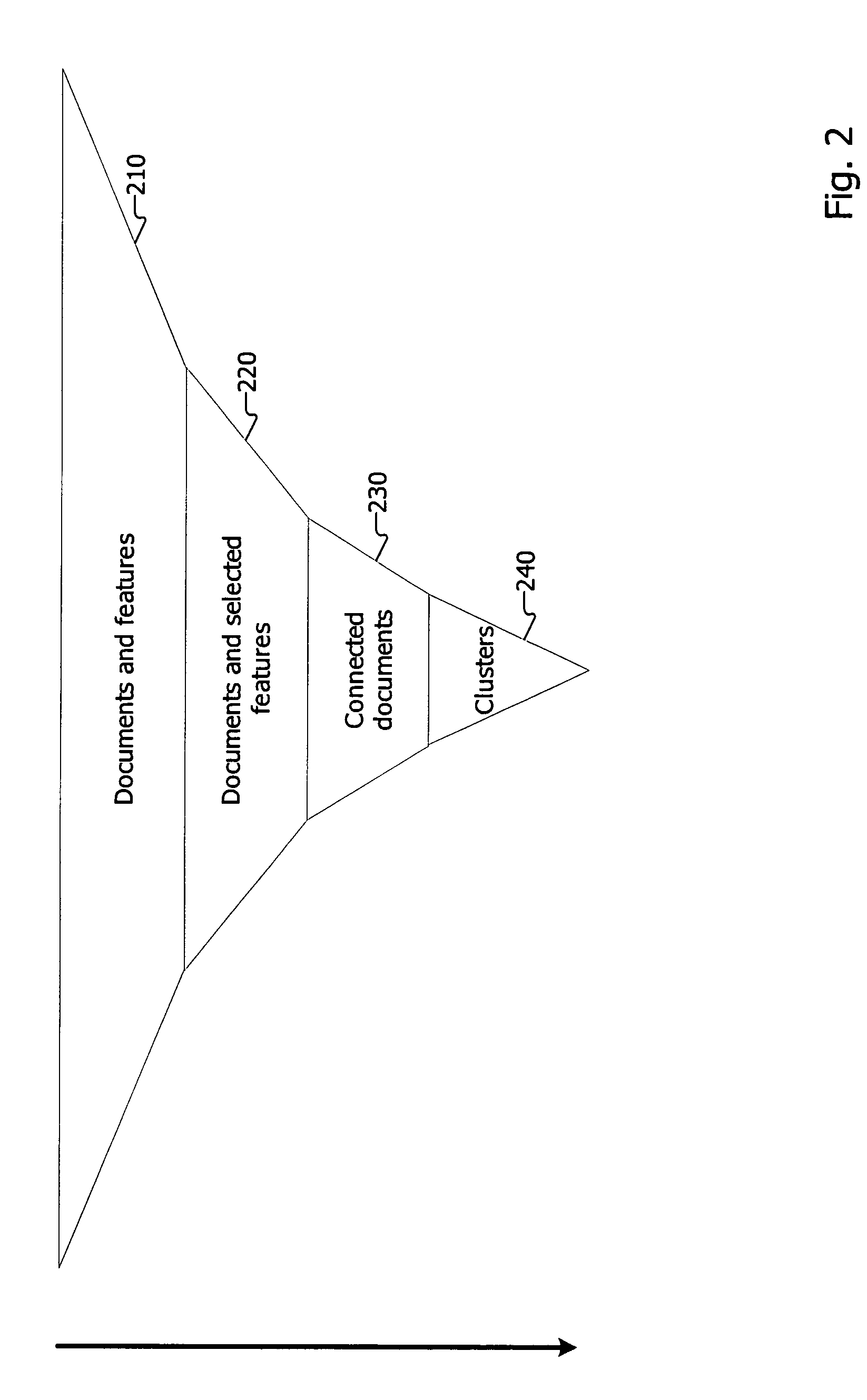Identifying related objects using quantum clustering
a clustering algorithm and related object technology, applied in the field of object analysis and evaluation, can solve the problems of limited usefulness of most commonly used clustering algorithms and impracticality for large data sets
- Summary
- Abstract
- Description
- Claims
- Application Information
AI Technical Summary
Benefits of technology
Problems solved by technology
Method used
Image
Examples
Embodiment Construction
[0024]In various contexts, from an Internet search, to genetic research, to a shopping data mining, to business intelligence, objects are clustered to allow for a quicker and more efficient analysis to be made. Similar objects are grouped together, which highlights the ways in which these objects are similar and allows the analyst to react to the objects as a group. For these and other reasons clustering of objects is beneficial. A method of clustering objects referred to as quantum clustering is described herein.
[0025]Environment
[0026]FIG. 1 is a block drawing of an environment 100 in which quantum clustering methods may be implemented. The quantum clustering methods described herein may be implemented in software and executed on a computing device such as server 130 and / or computer 110.
[0027]A computing device as used herein refers to a device with a processor, memory, and a storage device. Computing devices are capable of executing instructions. The term computing device includes...
PUM
 Login to View More
Login to View More Abstract
Description
Claims
Application Information
 Login to View More
Login to View More - R&D
- Intellectual Property
- Life Sciences
- Materials
- Tech Scout
- Unparalleled Data Quality
- Higher Quality Content
- 60% Fewer Hallucinations
Browse by: Latest US Patents, China's latest patents, Technical Efficacy Thesaurus, Application Domain, Technology Topic, Popular Technical Reports.
© 2025 PatSnap. All rights reserved.Legal|Privacy policy|Modern Slavery Act Transparency Statement|Sitemap|About US| Contact US: help@patsnap.com



